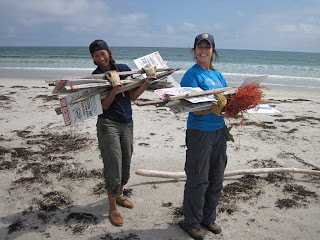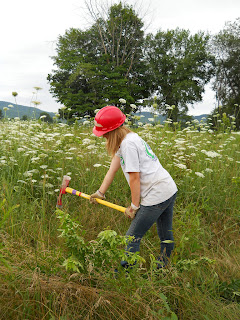Our blog has been live for a short while, and we've put up several posts as examples of the work we do with partners to meet our mission--to conserve the outdoors for the future. We've also launched our new website (read about it here), which has a lot of neat information about what we do. But check out the blog post below for a short and sweet introduction to how we work for both you and Mother Nature.
The U.S. Fish and Wildlife Service, which falls within the President’s executive branch, is a mission-oriented organization. Our mission is to work with others to conserve, protect and enhance fish, wildlife and plants and their habitats for the continuing benefit of the American people. Ecological Services, a division within the Service, resides over a chunk of those responsibilities.
The U.S. Fish and Wildlife Service, which falls within the President’s executive branch, is a mission-oriented organization. Our mission is to work with others to conserve, protect and enhance fish, wildlife and plants and their habitats for the continuing benefit of the American people. Ecological Services, a division within the Service, resides over a chunk of those responsibilities.
Almost every one of our responsibilities connects with people, from the use of natural resources for recreation and livelihood to the balance of those needs with the conservation of protected wildlife. Human demands on the outdoors can leave animals and plants vulnerable. We work as partners to balance that scale.
 |
| The U.S. Fish and Wildlife Service helps protect piping plovers by posting signs to warn visitors of nesting birds on the beach. Credit: USFWS |
We evaluate the status of animals and plants to determine if they need protection under federal law. ES is responsible for administering the Endangered Species Act, one of the most comprehensive wildlife conservation laws in the world. The program works to conserve and restore endangered and threatened species and the environments upon which they depend. We also issue endangered species permits to promote stewardship and long-term conservation not only for development, but also for research.
We rely on partners to get work done on the ground, such as getting rid of invasive plants that take over land needed by native wildlife. These partners could be private landowners, such as states, towns, organizations, your neighbors and others. We provide technical assistance, such as wetlands information or restoration design, or help with funding and the manual work.
Wildlife conservation isn’t cut and dry. Sometimes it does mean cutting trees and managing predators. In some places, rivers and streams have been damaged by years of alteration for agriculture or industry, and they need restoring so they can once again support fish and wildlife.
We get so many benefits from a healthy outdoors. In return for our protection, the environment provides us with recreation, clean air and water, flood control, food and more.
 |
| Partners like this Youth Conservation Corps member help the U.S. Fish and Wildlife Service control invasive multi-flora rose. |
- More than 90 species have been threatened with extinction and are under federal protection in the Northeast. We lead the recovery of more than 40 of those.
- The cost of invasive species is more than $120 billion in damages every year to the U.S.
- Removal of barriers in rivers returns more than $535,000 per mile to the U.S. economy.
- Loss of bats in North America could lead to agricultural losses estimated at more than $3.7 billion per year.
Submitted by Paul Phifer
No comments:
Post a Comment